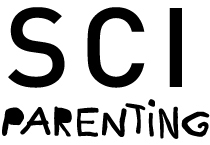Fertility
Spinal cord injury has no direct effect on female fertility. However, the situation is more complicated for a man with spinal cord injury. Up until 1990, becoming a father the natural way was considered nearly impossible. But today the prospects are very different.
Male fertility following spinal cord injury
In the past it was difficult or even impossible for a man with a spinal cord injury to become a father mainly because of problems with erection and ejaculation. Nowadays, good methods are available to obtain sperm without ejaculation. When combined with improved methods for artificial insemination, the chances of becoming a biological father are about the same among men with spinal cord injury as for the rest of the male population.
Early on during the rehabilitation process for spinal cord injury it is important to obtain information that it is still possible to become a parent. The knowledge that parenthood is an option provides security and improves self-image. In Sweden about 30 children are born each year to a father with spinal cord injury. People who have decided to start a family and who require support should turn to their spinal cord injury unit for further referral to a fertility clinic.
Several factors may contribute to impaired fertility in males:
- Inability to achieve erection (erectile dysfunction) impairs the ability to have sexual intercourse..
- Impaired ability to ejaculate.
- Decreased sperm count. It is common for men with spinal cord injury to have a lower sperm count in the ejaculate. (The ejaculate contains more than just sperm, and the volume of the ejaculate is not always proportional to the number of sperm.)
- Reduced quantity of viable sperm. A greater proportion of impaired sperm that are incapable of fertilization may be present in the ejaculate, regardless of whether or not the sperm count is normal.
Several of these factors commonly occur simultaneously, which impairs fertility in 90-95% of all men with spinal cord injury. Fortunately, over the past few decades medical advances in the field of assisted reproduction have largely been able to overcome these problems. Nowadays, about 80% of all men with spinal cord injury have the potential to become biological fathers.
Protection against unwanted pregnancy is still important, even when fertility is impaired because fertilization during intercourse is still possible. And of course, there is no reason to avoid trying to become pregnant during intercourse when pregnancy is desired.
Treatment for impaired fertility
A degree of overlap exists with treatment of sexual dysfunction since erectile dysfunction may lead to impaired fertility. Treatment that makes intercourse possible may sometimes be sufficient for a man to become a father. But this does not apply in all cases.
If a man with spinal cord injury has difficulty ejaculating during intercourse, he can use vibratory stimulation or masturbation to help achieve climax so that when he is close he can then insert his penis into the vagina or hold it inside. If this tactic is unsuccessful, he can use masturbation and/or vibratory stimulation to achieve ejaculation, after which he can collect the ejaculate using a plastic syringe, which is then inserted into the vagina. One requirement for becoming pregnant is for the sperm to be introduced into the vagina around the time of ovulation.
Vibratory stimulation using a penile vibrator, such as Ferticare, should be first line treatment. A vibrator can be used to achieve fertilization at home. If such methods are unsuccessful, more extensive examinations and measures will be required which involve workup of both male sperm and female fertility.
A few other methods for obtaining sperm:
- Electroejaculation – a long, narrow instrument is introduced into the man’s rectum and placed adjacent the prostate where electrical stimulation causes the hypogastric nerve to trigger ejaculation.
- Another option is to obtain a punch biopsy to surgically remove a small sample of testicular tissue which is subjected to microscopic examination to identify and harvest sperm.
- Sperm can also be withdrawn through a thin needle inserted into the vas deferens.
Regardless of the method selected to obtain viable sperm, the next step is usually in vitro fertilization (IVF). The ultimate goal is to fertilize an egg in a test tube and then introduce the egg into the woman’s uterus in hopes that the egg will become implanted and grow into a fetus. Sometimes several eggs are fertilized simultaneously, either so that two can be introduced into the uterus at the same time or so that embryos can be frozen and saved for use at a later date. Women are treated with female hormones to stimulate production of more eggs. The eggs are harvested through a minor surgical procedure.
The idea is to make it as easy as possible for the sperm to fertilize the egg. Intracytoplasmic sperm injection (ISCI) is a modern type of in vitro fertilization in which the sperm is injected directly into the egg.

Female fertility following spinal cord injury
Spinal cord injury has no direct effect on female fertility, except during the time immediately following spinal cord injury, when there is often cessation of menstruation. This is due to a transient elevation of the hormone prolactin in the blood, a result of stress caused by the spinal cord injury. Menstrual periods usually resume 3-6 months after the injury, at which time fertility returns to normal. At that point it is just as easy or difficult for a woman with spinal cord injury to become pregnant as for a woman without such an injury.
This text was reviewed for medical accuracy by Dr. Claes Hultling, Neurological Clinic, Karolinska University Hospital Solna, Associate Professor Karolinska Institutet.
